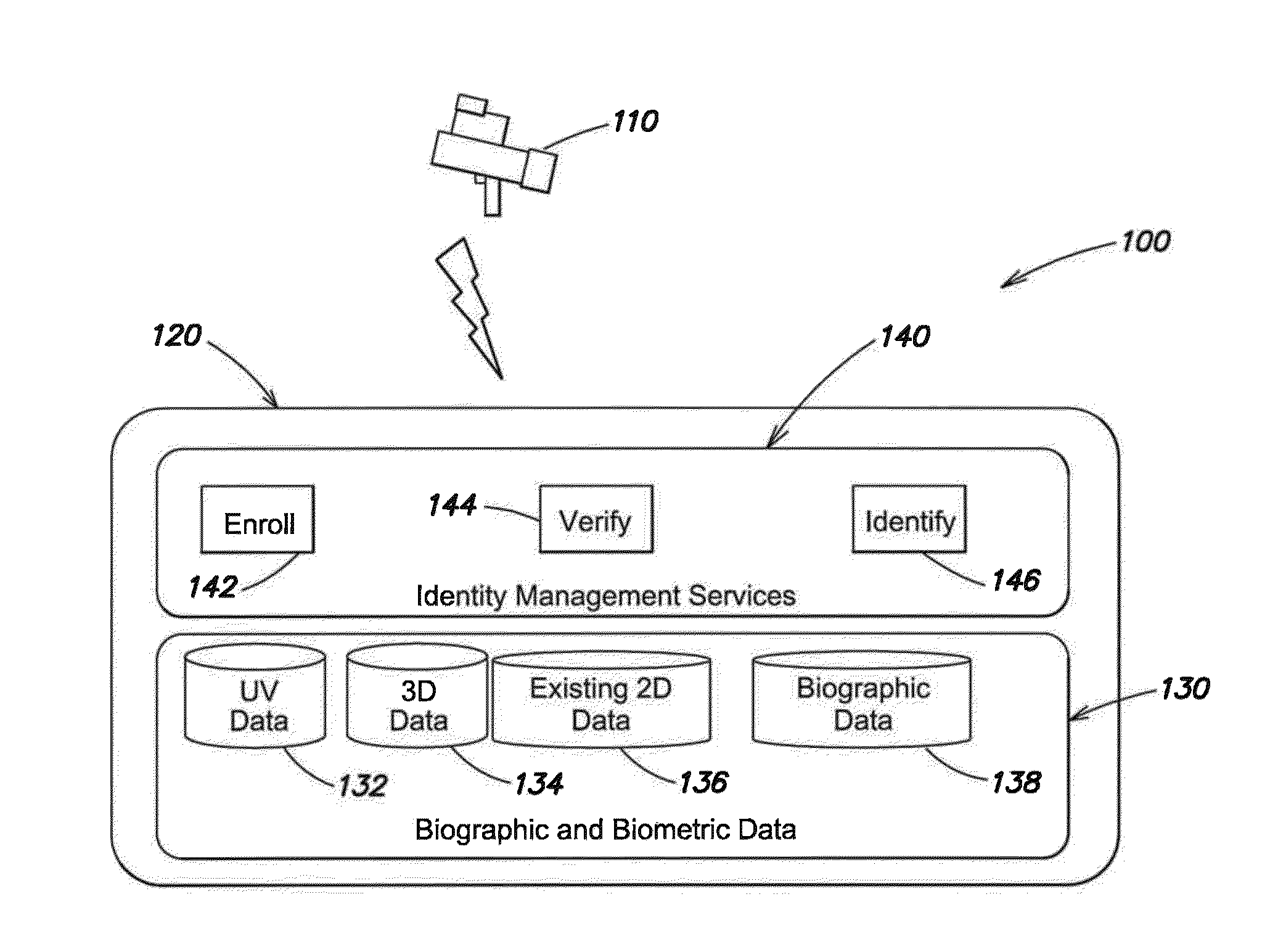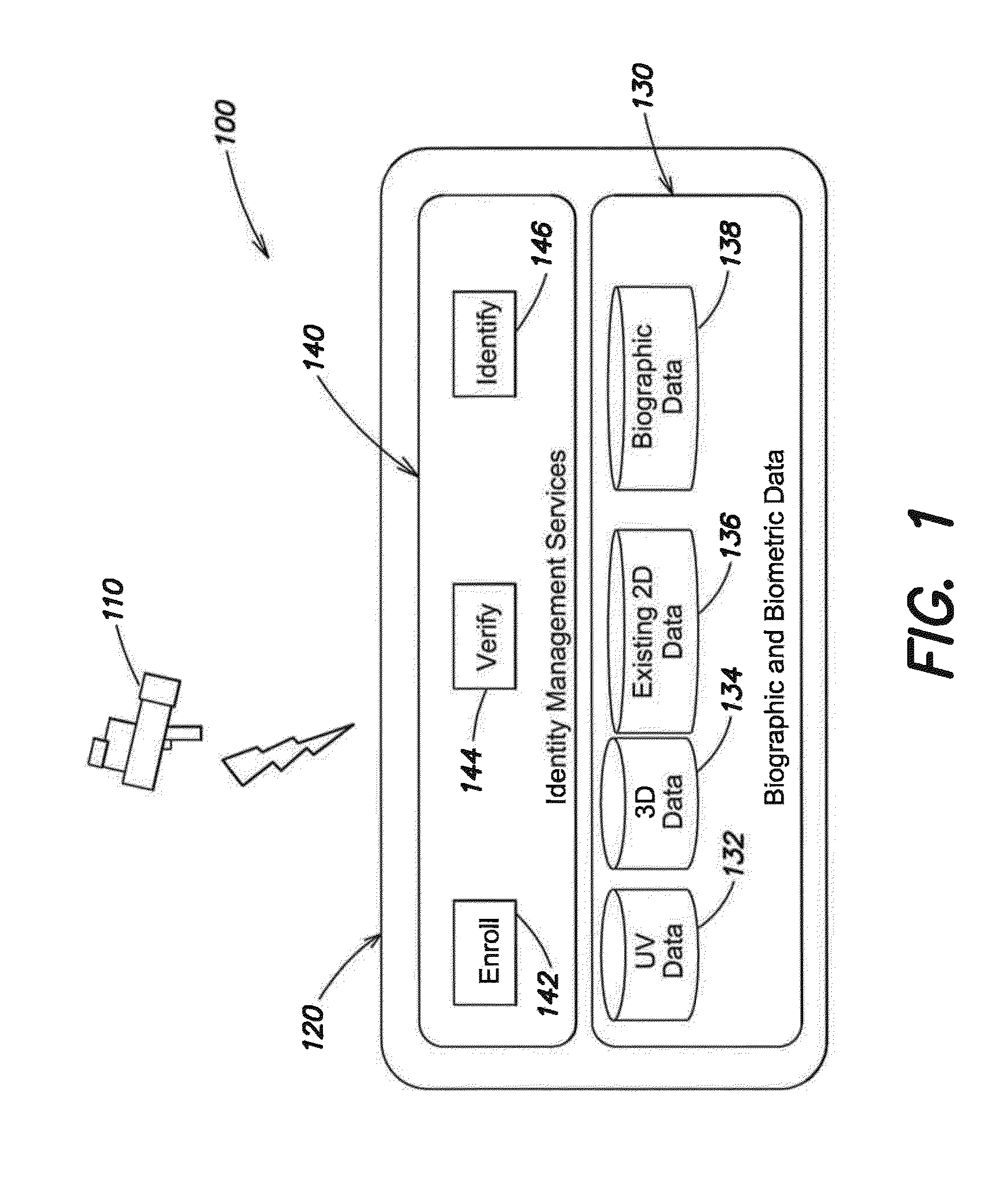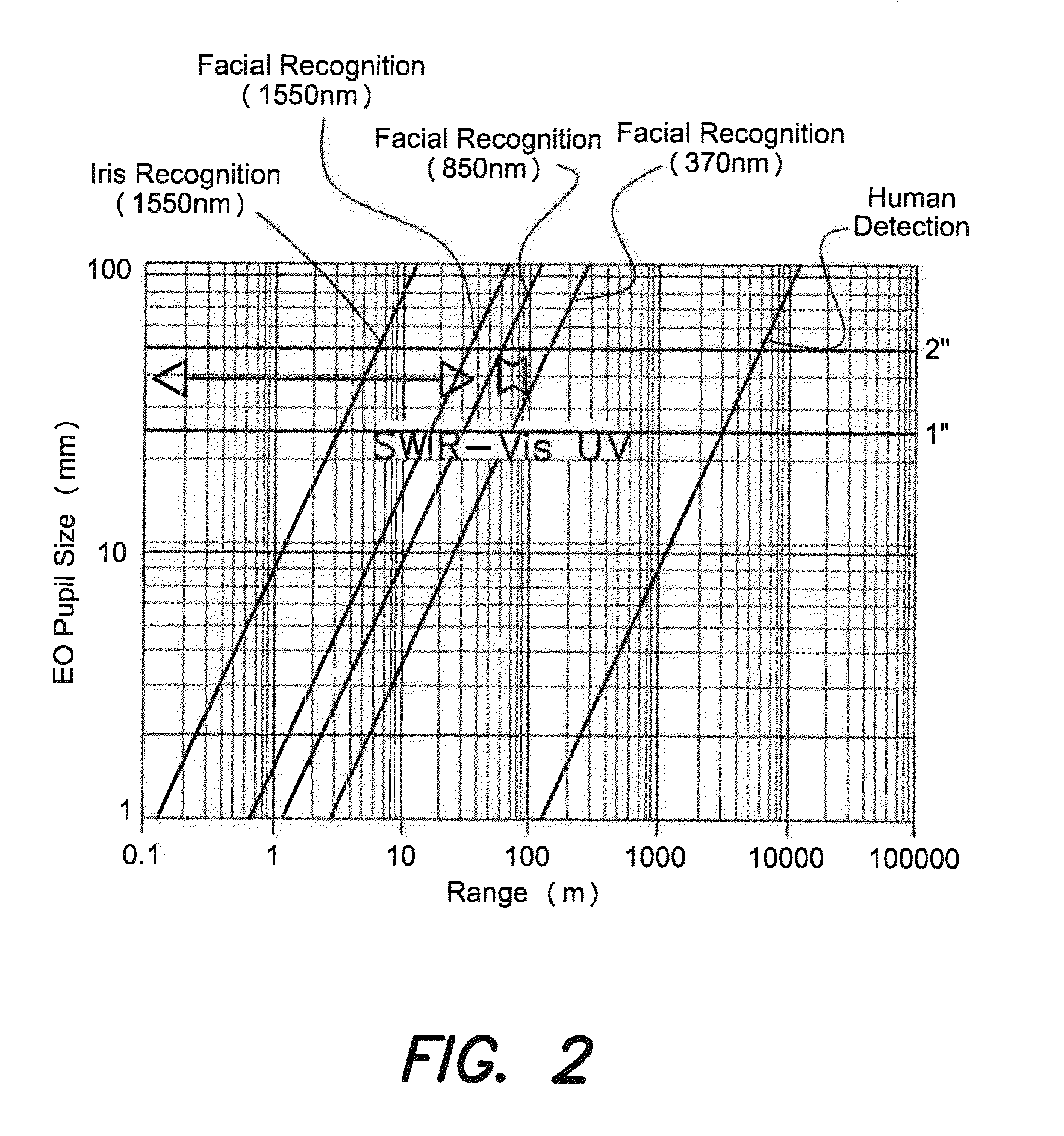Methods and apparatus for 3D UV imaging
a technology of 3d uv and imaging, applied in the direction of optical radiation measurement, radiation control device, instruments, etc., can solve the problems of various limitations or drawbacks of systems, the accuracy of these systems is limited by the pose and expression of individuals, the level of illumination, and the inability to easily carry devices, etc., to achieve the effect of improving accuracy and rang
- Summary
- Abstract
- Description
- Claims
- Application Information
AI Technical Summary
Benefits of technology
Problems solved by technology
Method used
Image
Examples
Embodiment Construction
[0023]There is a need for a robust facial recognition system that can allow covert identification of individuals at long range (for example, >50 m) in uncontrolled situations and despite various adverse conditions, such as low light, poor quality images, low resolution, tilt or angle of the sensor relative to the individual, and where only a portion of the individual's face may be visible. In addition, for various applications it may be desirable that the system is portable, can operate with limited memory storage, and may incorporate existing sensors and cooperate with existing image databases.
[0024]Accordingly, aspects and embodiments are directed to a system and method for three dimensional (3D) object identification, for example, facial recognition, that overcomes the long range diffraction limit in visible-SWIR LADAR systems by using near-ultraviolet (near-UV) lasers and detectors, as discussed below. In one embodiment, a miniature, for example, handheld or compatible with unma...
PUM
 Login to View More
Login to View More Abstract
Description
Claims
Application Information
 Login to View More
Login to View More - R&D
- Intellectual Property
- Life Sciences
- Materials
- Tech Scout
- Unparalleled Data Quality
- Higher Quality Content
- 60% Fewer Hallucinations
Browse by: Latest US Patents, China's latest patents, Technical Efficacy Thesaurus, Application Domain, Technology Topic, Popular Technical Reports.
© 2025 PatSnap. All rights reserved.Legal|Privacy policy|Modern Slavery Act Transparency Statement|Sitemap|About US| Contact US: help@patsnap.com



